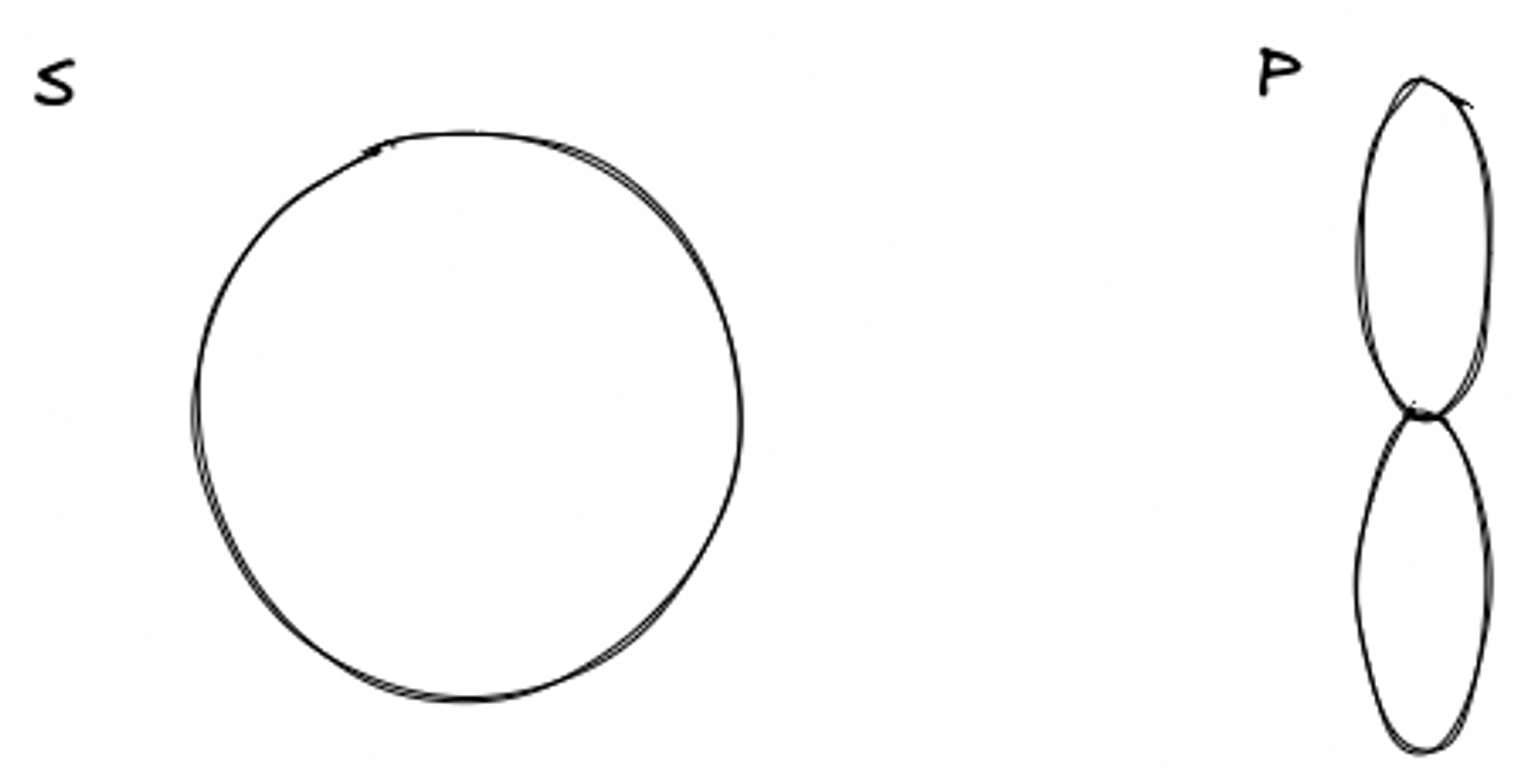-
Electrons are arranged in energy levels or shells
-
n is the principal quantum number or shell number
-
The maximum number of electrons in each shell is:
-
Shells are divided into sub shells
- S: Holds maximum of 2 electrons
- P: Holds maximum of 6 electrons
- D: Holds maximum of 10 electrons
- F: Holds maximum of 14 electrons
| Principle Quantum Shell | Sub-shells | Total Number of Electrons |
|---|---|---|
| n=1 | 1s | 2 |
| n=2 | 2s, 2p | 8 |
| n=3 | 3s, 3p, 3d | 18 |
| n=4 | 4s, 4p, 4d, 4f | 32 |
Order of filling of sub-shells
- Rule for fulling sub-shells with electrons is to start with the lowest energy available sub-shell
- The sub-shells can be seen below in increasing order of energy
- Orbital: region around the nucleus of an atom that can hold up to 2 electrons with opposite spins
- Area of space which has a high probability of an electron existing in that area. Up to 2 electrons can exist there, each with an opposite spin
| Sub-shell | Shape |
|---|---|
| S | Sphere |
| P | Infinity Symbol |

- Each orbital holds up to 2 electrons regardless of whether it is an “s”, a “p” or a “d” orbital
- Electrons have opposite spin to prevent repulsion
- The number of occupied energy shells is equal to the period number
- Outermost electron in “x” sub-shell is part of the “x” block, x being an unknown variable
3: Principle Quantum Number/Principle Sub-shell
s: sub-shell name
1: number of electrons in energy shell